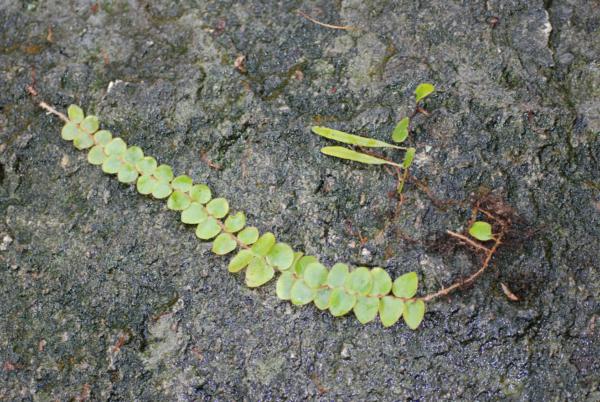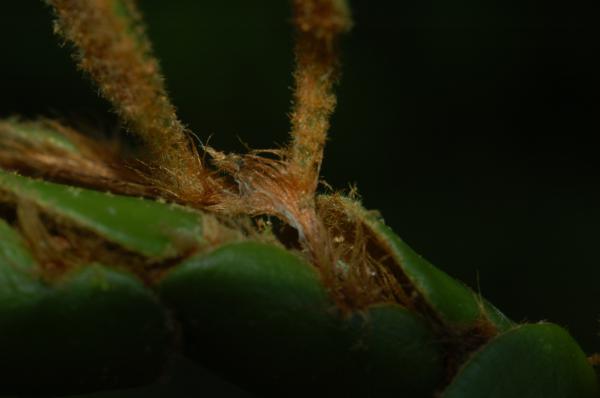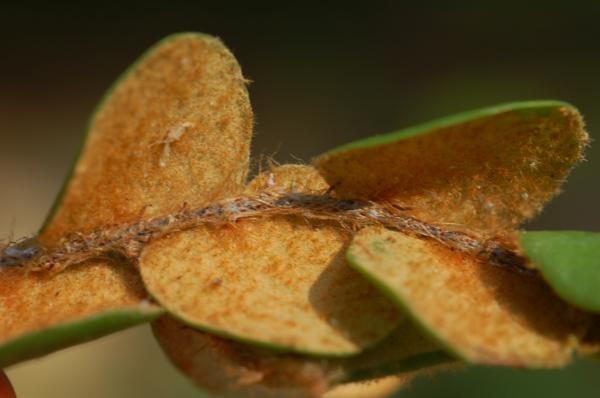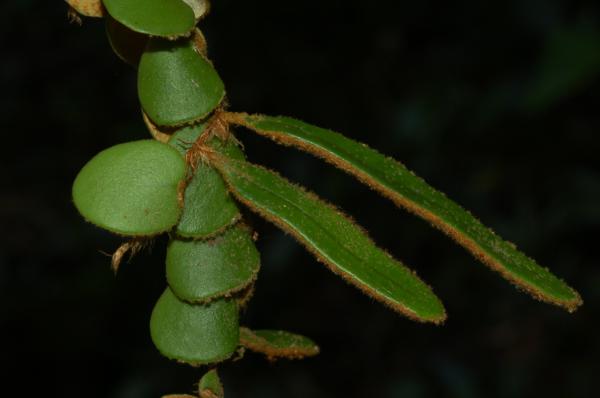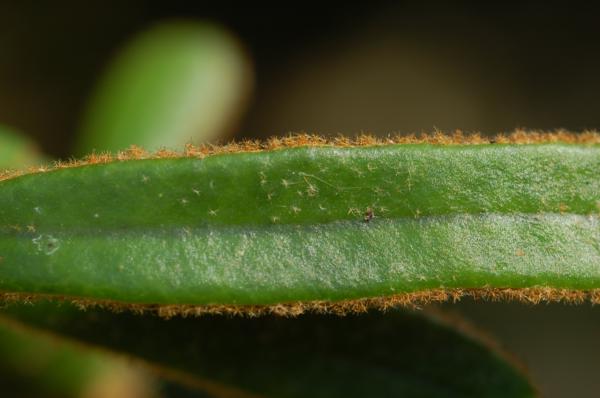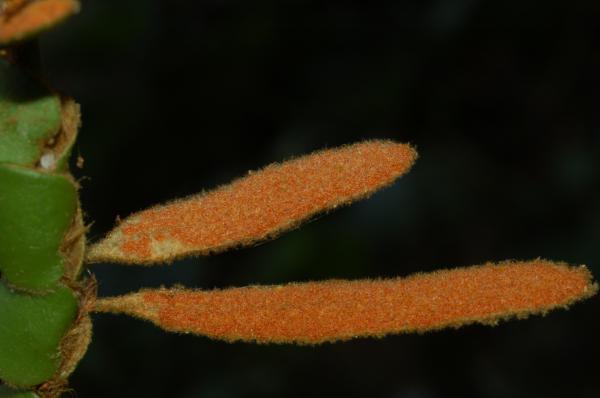
Pyrrosia nummularifolia (Sw.) Ching
Family
Polypodiaceae
Nomenclature
Pyrrosia nummularifolia (Sw.) Ching, Bull. Chin. Bot. Soc. 1: 47. 1935; Holttum, Rev. Fl. Malaya ed. 1, 2: 144, f. 59. 1955 [‘1954’]; Tagawa & K.Iwats., SouthE Asian Stud. 3(3): 75. 1965; Tagawa & K.Iwats., SouthE. Asian Stud. 5: 47. 1967; Tagawa & K.Iwats., Acta Phytotax. Geobot. 23: 52. 1968; Hovenkamp, Leiden Bot. Ser.: 214, f. 23. 1986; Tagawa & K.Iwats., Fl. Thailand 3: 494. 1989; Hovenkamp, Fl. Males., Ser. II, Ferns and Fern Allies 3: 165. 1998; Boonkerd & Pollawatn, Pterid. Thailand: 260, 287. 2000. – Acrostichum nummularifolium Sw., Syn. Fil.: 191, 419, t. 2, f. 1. 1806. – Niphobolus nummularifolius (Sw.) J.Sm., J. Bot. 3: 396. 1841; Bedd., Handb. Ferns Brit. India: 334.f. 183. 1883. – Type: Thunberg s.n. (S), Java.
Description
Rhizome long creeping, 0.6–1.6 mm diam., bearing two rows of almost imbricate fronds, densely scaly throughout; scales linear, 3.3–6 by 0.3–0.7 mm, pale brown with deep brown centre, hairy at margin, marginal hairs longer. Fronds simple, distinctly dimorphic. Sterile fronds: stipes very short, up to 3 mm long, scaly at base; laminae almost circular to broadly oblong, round at apex, (0.8–)1.5–2.5(–5) cm long; midrib distinct in lower half of the upper surface, veins completely hidden, anastomosing, with free included veinlets; fleshy, upper surface stellate hairy or glabrescent, lower surface densely hairy with stellate hairs. Fertile fronds: stipes 1–1.5 cm long, slender; laminae lanceolate, up to 7 by 0.8 cm, round to moderately acute at apex, gradually narrowing towards base. Sporangia covering the whole undersurface, sori embedded in thick layer of hairs.
Distribution in Thailand
SOUTH-WESTERN: Kanchanaburi; PENINSULAR: Surat Thani, Phangnga, Nakhon Si Thammarat, Phatthalung, Trang, Satun, Yala.
Wider Distribution
India, Burma,W Malesia east to the Philippines, Sulawesi and Lesser Sunda Islands.
Ecology
Epiphytic on tree trunks or on rocks in light shade or in open places usually at low altitudes, rather common.
Proposed IUCN Conservation Assessment
Least Concern (LC). This species is widespread and not under any known threat.
Voucher specimens - Thailand
Middleton et al. 4376, Nakhon Si Thammarat, Khao Luang National Park (E); Middleton et al. 5417, Phatthalung, Lan Mom Jui Waterfall (E).
Creeping habit with fertile (above) and sterile (below) fronds
Rhizome scales
Lower surface of sterile fronds and rhizome
Upper surfaces of sterile and fertile fronds
Upper surface of fertile frond
Lower surface of fertile fronds
Site hosted by the Royal Botanic Garden Edinburgh. Content managed by Stuart Lindsay, Gardens by the Bay, Singapore and David Middleton, Singapore Botanic Gardens. Last updated 24 January 2012
